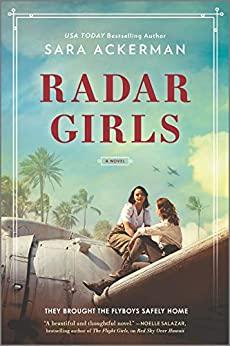Source: ebook borrowed from the library

One December Sunday morning, Daisy's fishing expedition ends with the sounds and sights related to the bombing of Pearl Harbor.
Within a month, Daisy and other women living in and around Honolulu are recruited for the Women's Air Raid Defense (WARD). As WARDs, the women plot the locations of aircraft, detected by radar stations around the island, on a giant map.
Their primary job is to prevent another surprise attack by distinguishing friendly planes from enemy ones. Their secondary job is described by the tagline on the cover: "They brought the flyboys safely home." With the help of Rascals (the code name for WARDs), pilots could fly through storms or in pitch-black darkness guided by the calm confident voices of women who knew their jobs.
Thoughts: Happy NaNoWriMo! Today is the first day of the annual challenge to write a 50,000-word novel in a month.
For the first day of NaNoWriMo, it seemed appropriate to write a review of a book that is a comp to the novel that I'm working on in November. In writers' jargon, "comps" are books that are comparable to my story. My comps are books set during World War II that feature women war workers. If you like Radar Girls, you might like my story, too.
Sara Ackerman found an unusual group of women workers to explore in Radar Girls. The Women's Air Raid Defense only existed for the duration of the war and units were only formed in the Hawaiian Islands, although some women were recruited from the mainland. According to the Wikipedia article, about 500 women served as WARDs.
I enjoyed the diversity of the women. We're told about skin colors and backgrounds (both ethnic and class) of the main characters. Hawaii accommodated more racial diversity in their recruitment of women workers than I see in Washington DC, where my story is set.
The setting of Hawaii really comes to life in this novel. We're always aware of being near the ocean and of having access to fruits and vegetables, as well as seafood, that aren't part of my usual experience in Missouri. I liked learning about the plant life of Hawaii and imagining the shades of greens and the bursts of colors from flowers.
Appeal: Read this to experience what it was like to live in Hawaii during World War II.

Have you read this book? What did you think?


About Joy Weese Moll
a librarian writing about books
